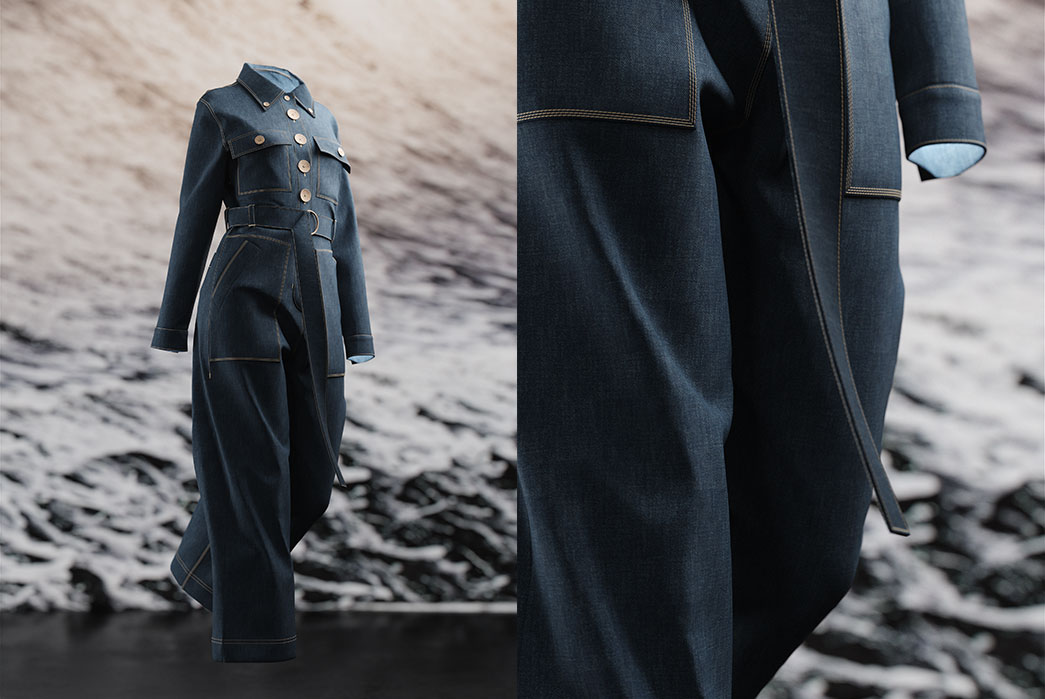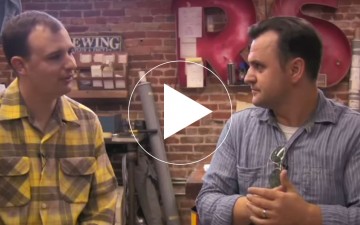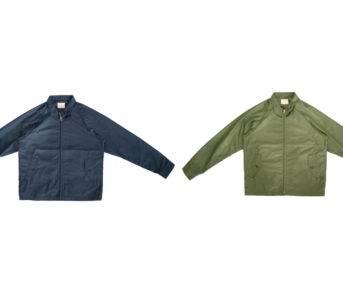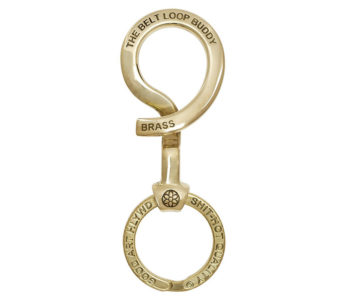
It’s nigh impossible to understand the true environmental impact of any garment you buy as a consumer. There are multitudes of different certifications and criteria that a manufacturer can follow or not follow, but they aren’t a whole lot of use to someone looking at a rack of clothing if they aren’t immediately understandable.
Cradle to Cradle (C2C) is a recent development that checks both of those boxes by allowing companies to close the loop of manufacturing and re-incorporate all of their waste back into their production cycle, essentially making no waste at all.
We spoke with Mansoor Bilal, Vice President Marketing, Research & Innovation, at Eda Dikmen, Marketing and Communications Manager, at Soorty Enterprises, a vertically integrated denim manufacturer and one of the largest proponents of C2C in the world about what it means for their business.
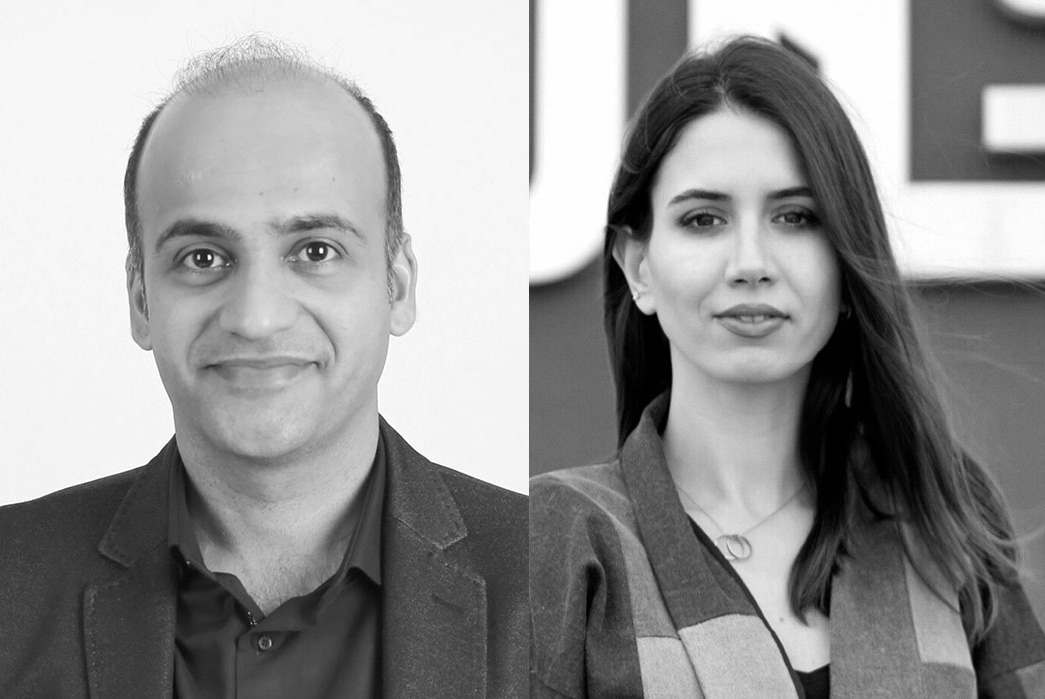
Mansoor Bilal (left) and Eda Dikmen (right).
What does it mean to be Cradle to Cradle certified?
MB: C2C is the transparency of the whole supply chain, it includes the evaluation of each process, raw material supply chain to all tiers & its product.
It’s a design system developed to involve the circular design principle in the way we make, use and reuse things. As it aims for a continual, circular way of doing things, all materials and processes involved in the production get C2C assured, ensuring the entire process is responsible.
ED: To get the C2C accreditation a company gets verified under five categories: Material Health, Material Reutilization, Renewable Energy, Water Stewardship and Social Fairness. We are very glad and proud of achieving high results in all five categories and what is even better is that this is completely transparent – anyone interested can simply go into the C2C website and see how we’ve scored under what category.
Sustainability is a long journey, takes patience and determination. Sometimes you need to go inches to go miles and we’ve embraced this philosophy to constantly improve ourselves. This transparency is helping us, and the world, to define the room for improvement, and to change for better at every step.
What was your first exposure to C2C as a concept?
MB: A one of its kind Zero Wastewater dyeing system was introduced by Soorty back in 2017 soon after we realize we should get it assessed by a third party while looking for the option we came across C2C certification.
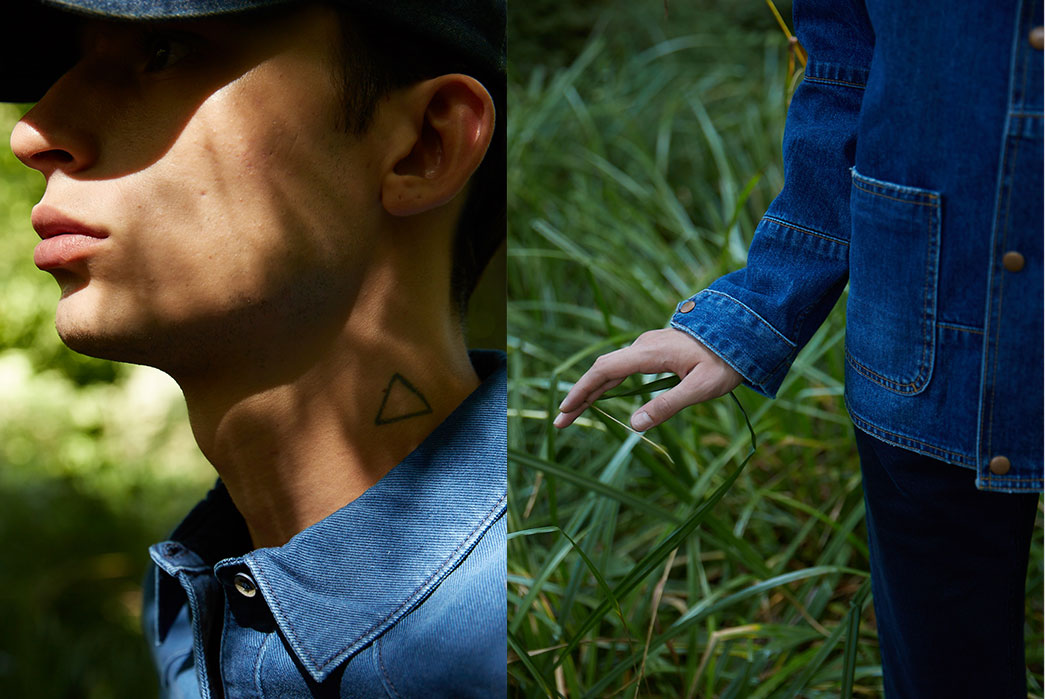
When did Soorty decide to implement C2C in its facilities?
MB: We successfully implemented it in July 2018.
ED: We are truly committed to environmental and social consciousness. We believe sustainability is not only a lifestyle or a philosophy to adopt but also a radical responsibility, especially for companies like us who have a big scale and hence a big impact. Being dedicated to the concept of circularity and responsibility, we are constantly revolutionizing the future of denim with the investments we make, the innovations we launch, the genuine commitment at the heart of all our operations.
Since that day, we have been continuing to look for alternatives, business partners and smart solutions that can take our progress further and we have been extending our C2C assured product portfolio more and more at every new collection we launched. For the launch of our C2C line we have collaborated with the Amsterdam based fashion house, The Fabricant and have introduced the world’s first digital denim garment.
The goal here was to showcase the collection by wasting no more, by being future proof and adopting digital fashion when it was not as hot topic as it is today, in the post Covid-19 world, and by using nothing but data to show our products. Recently we have become the first denim company in the industry to achieve vertical C2C verification – meaning to have the accreditation in both fabrics, and garments.
C2C divides materials into technical and biological cycles, what are the technical and biological materials in involved in denim production?
MB: It’s a very vast list of chemicals which varies from process to process for every product range. Biological recycling of water etc, in garment production all the materials (trims, pigments, dyes, washing chemicals, etc) should be completely sustainable and traceable.
ED: This involves responsible sourcing in all stages of production and is a true realization of “design for purpose”. We see design as an incredibly powerful tool to improve life – from the materials you choose, to how you approach or treat them, to processes that go in between impact the life cycle of a product greatly. Design thinking holds a critical power in our future, making the C2C production quite precious. As all materials and processes involved are verified meaning we do not go the conventional way, but choose to be part of the solution by using only the certified raw materials and processes.
How does Soorty go about closing the loop in your production practices? I’m aware of the solar panels and the water recycling in Denim Kind, are there other techniques you’ve created?
MB: Closing the loop is all about sustainability. All our chemicals are sustainable and till the third tear of the sourcing cycle all our chemicals are zero hazardous. As per the Cradle to Cradle scope the minimum renewable energy required is 5%, we have assured and aligned our systems to comply with the use of Renewable energy for future sustainable brand’s needs.
ED: We are glad to own our state of art waste recycling plant with a shredding capacity of 100 tons per month. As per our commitment to a circular economy and closing the loop, we’re planning to increase this capacity to 300 tons per month in the near future. In addition, to maximize our efforts in recycling, we contribute to PCW (post consumer waste) by purchasing jeans that are no longer loved by their owners, preventing them from ending up in landfills. All this efforts comes with a fabrics family of recycled fiber content varying from 5% to 20%. We also produce pocketing and trimming from our industrial waste, recycling and repurposing them.
MINUS ZERO WASTE is our philosophy for over two years now and we have multiple projects and attempts to reduce the textile waste which is a source to landfills, a big threat to our planet. We believe for companies with scale like us, it is a responsibility to use less and make a better use of what is limited. The concept covers multiple initiatives ran around waste management, and in addition, in spite of the collective movement and increased impact, we collaborate with designers to make use of leftovers – fabrics unsold, or samples that have never made their way to be the selection which are not in a good shape to donate or make other uses. We approach this waste not as an output but as an input, making use of them in collections or new developments.
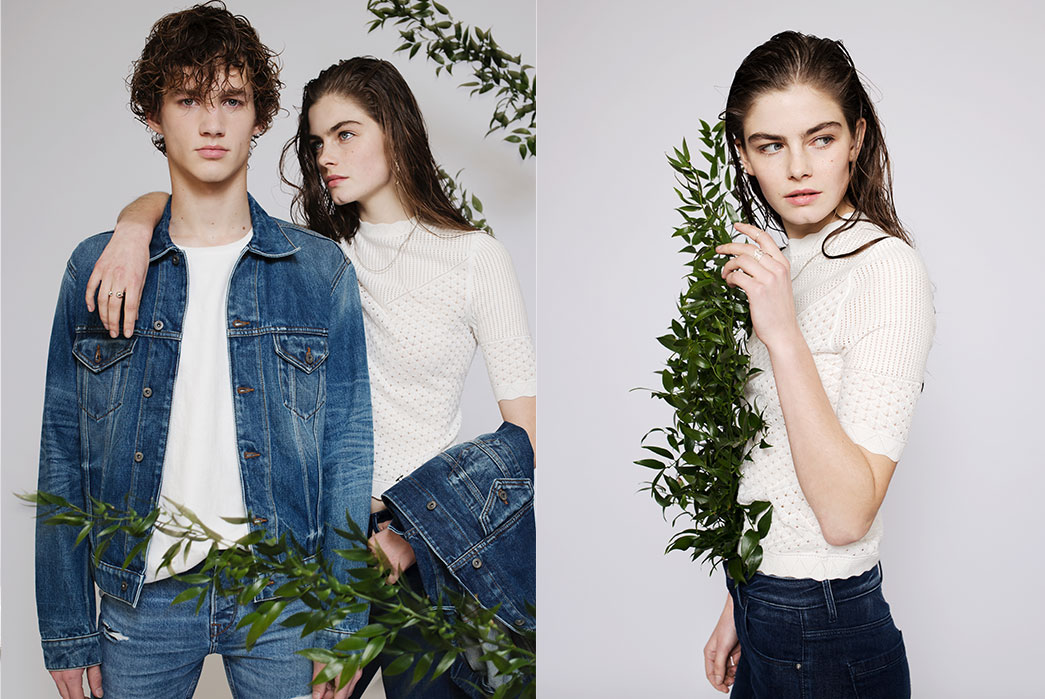
What are the limitations of C2C in current denim production? The denim recycling I’ve seen has been unable to use metal hardware and polyester thread, only the denim panels of a pair of jeans?
MB: In fabrics, it’s limited to colors, elastane, and materials. Few materials are approved by C2C in fabrics. We can’t use polyester, in garments all the threads should be 100% cotton & trims should be complied. We have a completely vertical recycling plant where we do the picking, cutting, and shredding in-house. Unfortunately, the current industry doesn’t have any solution for recycling polyester blends which are extracted from an old pair of jeans.
ED: It also comes to the point of demand and supply. A couple of years ago, when the end consumer was barely aware of how much the textile industry contributes to landfills, the demand for recycled goods was also low. However, with consistent push and information, the more they got exposed to the reality, the more they started to do something about it.
Simultaneously, the industry worked day and night to improve recycled clothing, which looked and performed more poorly compared to where we are today. Consumer demand brought the real change and now products with recycled content are greatly available. I hope the same will go with understanding the concept of circularity, and C2C assured goods.
Are your client brands supportive of C2C? Has there been any difficulty in making sustainable production changes with brands that may not want the added cost or changes to the final product?
MB: We are getting a good response at the moment, but the end consumers are not fully aware of the product and its benefits that’s why the brands are not ready to pay an extra cost, but at our end, it comes with an added cost.
What do you think consumers should know about C2C sustainability and how should they look for it when making a purchase?
MB: I think it’s very important for the brands and consumers to educate themselves because it’s the need of the time. Consumers all over the world are becoming conscious about climate change and the ethical use of resources. Brands and manufacturers are doing continuous efforts to make consumers aware buy applying a special tag or an additional branding on their C2C garments lines.
You can learn more about what it means to be C2C certified and Soorty’s efforts in creating a truly wasteless manufacturing model on their website.

